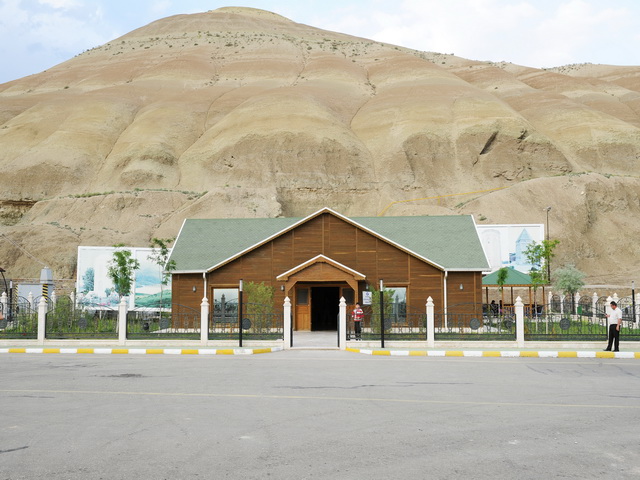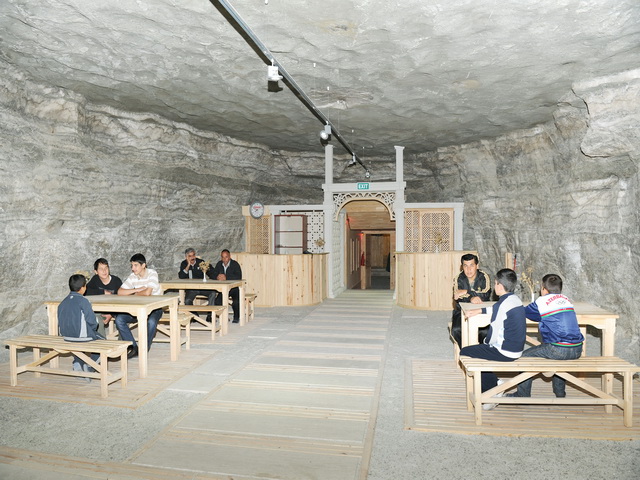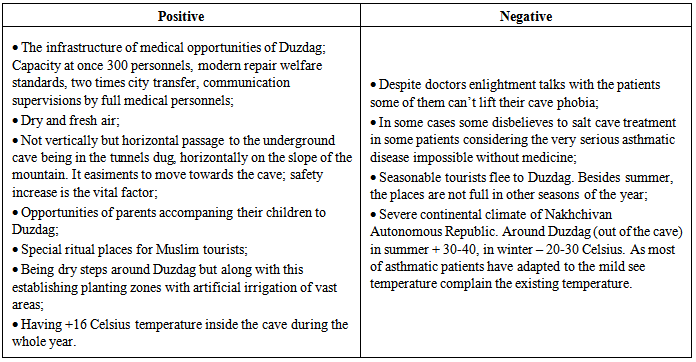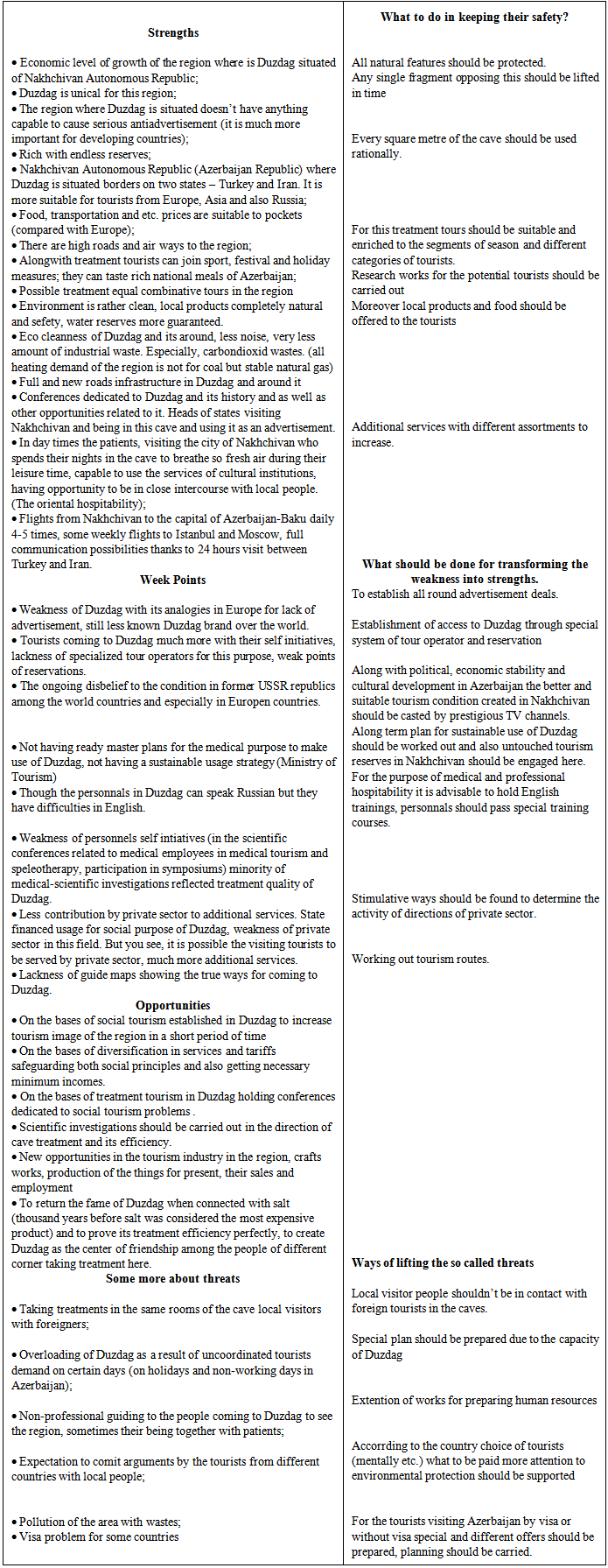-
Paper Information
- Paper Submission
-
Journal Information
- About This Journal
- Editorial Board
- Current Issue
- Archive
- Author Guidelines
- Contact Us
American Journal of Tourism Management
p-ISSN: 2326-0637 e-ISSN: 2326-0645
2015; 4(1): 1-6
doi:10.5923/j.tourism.20150401.01
Social Tourism in Duzdag, Nakhchivan Autonomous Republic within the Republic of Azerbaijan: Resources, Planning and Development
Ali Jabbarov, Zulfugar Zulfugarov
The Faculty of Economy, Nakhchivan University, city of Nakhchivan, Nakhchivan Autonomous Republic, Republic of Azerbaijan
Correspondence to: Ali Jabbarov, The Faculty of Economy, Nakhchivan University, city of Nakhchivan, Nakhchivan Autonomous Republic, Republic of Azerbaijan.
| Email: |  |
Copyright © 2015 Scientific & Academic Publishing. All Rights Reserved.
Present tourism bears the function of intercultural bridge and along with this it performs its contribution to the humanitarian development of society. To meet the needs and demands of mankind when happened natural disasters especially because of social cataclysm after population increase, to render people not only for their budget but also for being human is the question put as a target in front of this social tourism much more. Extension of social tourism and its administration through the use of natural-treatment resources in Nakhchivan Autonomous Republic as an integral part of the Republic of Azerbaijan, one of the developed countries of the world and other deals related to this have been considered in this article.
Keywords: Social tourism, Nakhchivan Autonomous Republic, Medical tourism, Duzdag speleotherapy treatment, Humanitarian development
Cite this paper: Ali Jabbarov, Zulfugar Zulfugarov, Social Tourism in Duzdag, Nakhchivan Autonomous Republic within the Republic of Azerbaijan: Resources, Planning and Development, American Journal of Tourism Management, Vol. 4 No. 1, 2015, pp. 1-6. doi: 10.5923/j.tourism.20150401.01.
Article Outline
1. Introduction
- Doubtless, everyone has right to travel, since good travelling provides the recreation necessity of people, recently its being a phenomenon isn’t surprising. Tourism causing economy growth, enspiring people to demonstrate favourable actions with all its positive aspects have become most active standard of life of billions of people. Tourism is the luxury of our time and everyone has full right to benefit by this luxury. Regarding this we have full confidence that, maybe not today, but any elementary contribution to tourism in the world, sure will be a very valuable present for the future generation. Gaining health care of travelers along with outlook increase, enrichment of tolerant feelings are said to be the wish of individuals and also governments organizing the travelling of the people with the modest income and inclusively important travelling together with a social tourism promotion is the shortest way to achieve own goals. Tourism and social responsibility What is a social tourism? But why to approach to the social tourism through the window of social responsibility? To answer this question is possible via several arguments. Nowadays the mentioned social tourism is the best means against social exclusion in the world [1]. One of the vital principles of sustainable development of society is not differing people due to their incomes. At the present moment everyone easily witnesses different strikes arisen from various crises in the world by low paid people either openly or hidden. In accordance with this different projects of various purposes focused to discharge the accumulated negative energy in society was easily seen in the fifties when Europe perfomed the importance of social tourism [2].The main differentiating feature of this broadly spread tourism in the Western and Eastern Europe is the source of its financing. Through this tourism category state undertakes an obligation in front of its citizens and provides their travelling rights [3]. Today along with commercial travellings social tours possess important segments as well. Nevertheless the date of bias social tours starts from the second half of the XIX century, but later on, especially, after World War II the spread and populism of this tourism could prevail among people and thus for making it “tourism for all” afterwards it was called as social tourism. As a result it became the best model in providing the social travelling necessity of the low paid people (in our sample medical tourism) and turned criterion of life quality [4].It is advisable to note that even this type of travelling in Soviet time covered some categories of low paid people such as: pensioners, jobless persons, students, agricultural collective farm workers etc. who from time to time were engaged to the tour of social importance. At that time there were tours of treatment, greetings, ecotourism importance which subjected to different ages who had performed good results in labour activity or education in parallel. All these occurred in the time when comfortable commercial tours didn’t widely cover the former USSR and even its propaganda wasn’t suitable. There was a time that hard working people in the plants, factories, collective farms, schools were sent to Crimea (Artek) of Ukraine which has been annexed by Russia, the regions of Kalbajar and Garabagh currently under occupation of Armenia, either completely unpaid or partially paid to provide their rest-recreation to some extend in 1970-1980 years. We have to confess that modern tourism, especially social tourism, is the product of stability and economic development. So that its development is linked to social and economic development of nations and can only be possible if a man has access to creative rest and holidays and enjoys freedom to travel within the framework of free and leisure time whose profoundly human character is underlined. It’s existence and development entirely depends on the existence of a state of lasting peace, to which tourism is required to contribute [5]. Doubtless, the more economy develops, financial opportunities are extending the more social tourism payments will be easier and possible respectively. Sure, for this purpose, there are different sources.In developed countries there are four types of financial sources of investment in social tourism; grant credit state, the National House of family allowances (NCC) or locally from the House Family Allowance (CAF), or funds from to individuals or loans of financial organizations [6]. But from different firms or funds in developed countries for now to expect such initiatives is very seldom and it causes to seek alternative ways.Because at any rate people are interested in ensuring their health. Through travellings and for this purpose they are ready to profit by any chance given to them. The physiological, social, economic and environmental impacts of tourism are so powerful that the right to travel and tourism have been incorporated in key international documents including the Universal Declaration of Human Rights of 1948, the International Covenant on Economic, Social and Cultural Rights of 1966, the World Tourism Organization’s Manila Declaration on World Tourism of 1980, Bill of Rights and Tourist Code of 1985 and the Global Code of Ethics for Tourism of 1999. The Universal Declaration of Human Rights has two passages that underpin the right to travel: articles 13 (2) and 24. Article 13 (2) states ‘‘Everyone has the right to leave any country, including his own, and to return to his country’’ [7]. Known that organizing of social tourism is much more compared with the deal of social responsibility of economic factors. No secret that our present time is better known as the culture being shared among people more than ever and in this context sharing of tourism possibilities with the world, especially making people understand that natural recourses of treatment importance concern all mankind throughout the world should be understood as the highest culture. To understand it and to take solid measures in this direction is the example of the greatest and deepest social responsibility. To take concrete measures after understanding the above touched responsibility belongs to the World Tourism Organization, Global Code of Ethics for Tourism as has been stated in the article 7 of the right to tourism: “social tourism, and in particular associative tourism, which facilitates widespread access to leisure, travel and holidays, should be developed with the support of the public authorities” and also to create suitable atmosphere for family, youth, students, adults and physically disabled people participating in mass tourism. Because, to isolate anyone for economic condition is beyond humanist principles.
2. Methodology
- Currently among potential tourists there are a large number of segments interested in social tours offered to make use of treatment-recreation resources. It is possible to arrive at this kind of idea without differing countries and continents that the Earth planet is rich with all kinds of natural resources said to be useful for human health. Very likely, the level of their usage impacts to the number of tourist and destination choice definitely. In other word, besides social responsibility understanding, starting from the difficulties created by natural condition and its solution till the simplest management questions, everything should be settled in a complex form, nothing else more. But if the nature has gifted various resources for human health and there is a stable economic growth in a country, then any issue solution should be approached in an optimist way. On the ground of natural resources in Nakhchivan Autonomous Republic (Azerbaijan) the development of social tourism may be overviewed in two stages. First, it is a very interesting fact that this region situated on the Southern slopes of the Lesser Caucasus with a territory 5.5 thousand km2 possesses a great deal of resources of treatment and healing importance. There are more than 250 mineral water sources majority of which are of treatment importance and are very famous among regional countries. But second, Duzdag Physiotherapy Center is much more attractive for its property of Speleoteraphy importance. So that, speleoteraphy (in Greek “speleo” means “cave”) is a rear method of treatment used in the cave condition [8]. The purpose of this investigation is to learn the medical tourism in the region by using medical features of Duzdag and to study the ways of social tourism extension on the ground of this. Having social tourism experience of Nakhchivan in the past and also medical tourism resources richness in this area, new necessary information was gathered on the basis of new development and marketing prizma. As a result of this every year more than 400 thousand tourists from the other regions of Azerbaijan and foreign countries come to Nakhchivan Autonomous Republic. Medical tourism, their principles of sustainability, the possibility of its promotion by state initiative have been learned from different sources. The analysis of experience of the countries was carried out, social load of the first investigations in this field was considered and different data were accumulated for this. Social tourism isn’t only the social responsibility of a state, but also the possible contributions by private sectors were considered through the domestic means of a developing country. Also the factors could impact to the cave treatment positively or negatively was considered, the impression of the tourists taken treatment here were learned and doctors’ observations were generalized. SWOT analysis of social tourism organizing and management within local demands frame was carried out. It was considered vital because furthermore planning of Duzdag strong laterals to develop more than and weak points correction to be restored due to the landmark offers. The priorities of the investigation were as follows:- Learning the travelling requirements of people, especially certain group of sensitive people;- Learning the efficiency of state initative for social tourism;- Learning the possibilities of branding of Duzdag as a tourism destination;- Overview its long-term opportunities in the future. Duzdag. Speleotherapy The word “Duzdag” consists of two components. The first component “Duz” has the meaning of “Salt”, but the second component “Dag” means “Rock”. The area is situated at 11 km. distance from the city of Nakhchivan with about 100 thousand people to the North-West.
 | Figure 1. Duzdag Physiotherapy Center |
 | Figure 2. Inside of the cave. Rest and recreation |
 | Figure 3. The Duzdag hotel |
|
3. Findings
|
4. Conclusions and Recommendations
- As known a number of questions appear during managing social tourism on the long standing sustainable principles of the opportunities of Duzdag. When investigated the ways of practical solution of all this we arrive at the following results:• According to its social responsibility social tourism is more important throughout the world an especially for the developing countries.• In social tourism packages great attention should be paid to its agitation that financing this filed and solution of sustainability provision of problems.• Organizing of treatment tourism grounded on natural mineral reserves is said to be one of the successful pilot projects for social tourism.• Implementation of social tourism in the form of international projects plays a great role in extending intercountries mutual-humanitarian relations.
ACKNOWLEDGEMENTS
- The authors are grateful to medical personnals of all Duzdag Physiotherapy center for their valuable thoughts in enriching of this article as well as to the tourists from different places taking treatment here for their sincerity and impressions that shared with us willingly.
 Abstract
Abstract Reference
Reference Full-Text PDF
Full-Text PDF Full-text HTML
Full-text HTML
